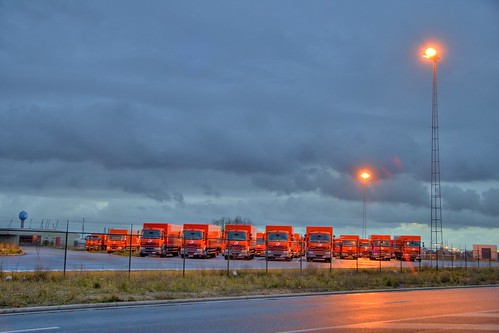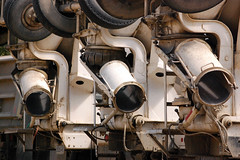History of the Forklift
(ArticlesBase SC #3196582)
Article Source: http://www.articlesbase.com/ - History of the ForkliftPRC (Pennsylvania Railroad Company) first used a battery powered platform truck at its district train station in 1906. What started out as a little in-house venture, has now turned into a fledgling forklift industry. Forklifts employed in today's industries are customized to accomplish specific tasks within that particular industry. In fact, the forklift certification business is an industry by itself. Below we outline some of the other significant events in the life of the Forklift.
During the first world war many advancements were made. Ransomes, Sims and Jeffries of Ipswich started producing different types of materials handling equipment. One of the primary reasons for the development of this type of equipment was due, in part, to the labor shortages caused by the war. Further development of the forklift continued through the 1920s and 1930s. World War II, like World War I before, expanded the use of forklift trucks worldwide. Following the war, more efficient methods for storing products in warehouses were being implemented. Warehouses needed more maneuverable forklift trucks that could reach greater heights. New forklift models were developed to fill this growing market. By 1956, Toyota had developed and introduced its first forklift model. Toyota's Model LA was initially only available in Japan. In 1967, Toyota finally brought the Model LA to the United States.
During the first world war many advancements were made. Ransomes, Sims and Jeffries of Ipswich started producing different types of materials handling equipment. One of the primary reasons for the development of this type of equipment was due, in part, to the labor shortages caused by the war. Further development of the forklift continued through the 1920s and 1930s. World War II, like World War I before, expanded the use of forklift trucks worldwide. Following the war, more efficient methods for storing products in warehouses were being implemented. Warehouses needed more maneuverable forklift trucks that could reach greater heights. New forklift models were developed to fill this growing market. By 1956, Toyota had developed and introduced its first forklift model. Toyota's Model LA was initially only available in Japan. In 1967, Toyota finally brought the Model LA to the United States.
We now find different specialty forklifts operating in factories today. From your basic forklift that you would find operated by your local grocery store, to the counterbalanced forklift trucks that are found at industrial sites. Some of the more specialized trucks are listed below.
Articulated Counterbalance Trucks (ACT)
The ACT truck is a front wheel steer that is able to offload trailers and place the load in narrow aisle racking. Due to their storage density and lift height capabilities, the ACT trucks can now compete with GVNA trucks.
Guided Very Narrow Aisle Trucks (GVNA)
The GVNA trucks are usually wire or rail guided. This type of truck, unlike ANAT trucks, requires a higher standard of floor flatness.
EP Trucks (Explosion Proof)
Explosion proof trucks are found chemical plants, petrochemical plants, pharmaceutical plants, and other industries that handle flammable materials. In North America, internal combustion powered industrial vehicles carry Underwriters Laboratories ratings that are part of UL 558. Industrial trucks that are considered "explosion proof" carry the designations GS for gasoline powered, DS for diesel powered, LPS for liquified propane or GS/LPS for a dual fuel gasoline/liquified propane powered truck.
Learning how to operate a Forklift
According to Forklift Kelowna, most forklifts have rear-wheel steering to help with maneuvering in tight corners. However, with the extra maneuverability comes instability. A forklift driver will experience an ever changing centre of gravity with every movement of the load. A forklift driver must never turn at a high rate of speed while the load is raised. Centrifugal and gravitational forces will cause the forklift to tip over at speeds in excess of recommendations. Forklifts are also designed with specified load limits for the forks. A loading plate for loading reference is usually located on the forklift.
Retrieved from "http://www.articlesbase.com/history-articles/history-of-the-forklift-3196582.html"
(ArticlesBase SC #3196582)
James Madison Iii -
About the Author:
James Madison is a devoted journalist for Forklift Certification Kelowna as well as their accopanying website. If you are interested in locating a forklift certification shop, check all of the instructive facts on their website.

Image by g-flow
Please be sure and tell us about all the information and articles you find here.

No comments:
Post a Comment